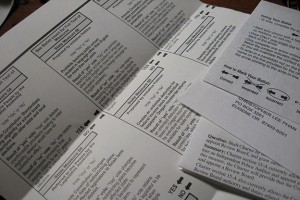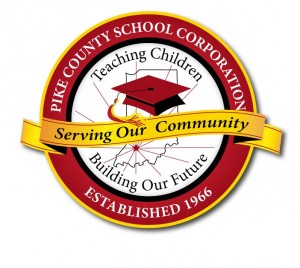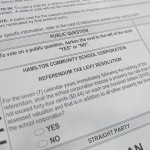What’s the Word? Schools As Salespeople For Referenda
Election season is upon us once again – but we’d forgive you if you forgot.

School districts may turn to voters to help finance construction or general fund projects during elections. (Photo Credit: Phil Roeder/Flickr)
May tends to host municipal elections – races without the fanfare of presidential, Congressional or gubernatorial races typical of November ballots. And that means the issues can take center stage.
School-related referenda dominate the ballots this time of year, and history shows that most of these measures that pass, pass in May – they have about a 50 percent success rate in Indiana. This could be because voters don’t want to pay more taxes, but some experts also point to a lack of understanding about what the additional tax money would pay for.
- Local Education: Name Your PriceHistory shows most of the school referenda that pass, pass in May – they have about a 50-percent success rate in Indiana. This could be because voters don’t want to pay more taxes, but some experts also point to a lack of understanding about what the additional tax money would pay for. StateImpact Indiana’s Rachel Morello takes a look at how school districts are making their sell to voters this election cycle, and what could be standing in their way.Download
Campaigning For Cash
Ever since lawmakers implemented property tax caps in 2008, the portion of local property tax money school corporations can receive has shrunk. That means more districts are turning to referendum to pursue financing when revenue falls short.
This May, thirteen Hoosier school districts are asking for 17 separate tax levy increases on the primary ballot – a mix of construction and general fund supplements.
Just like in every election, they’ll appear at the bottom of the ballot, and they’ll all be constructed the same way. The Department of Local Government Finance requires a one-sentence paragraph outlining:
- How much money the district needs,
- What the money is for, and
- What the request would do to the local tax rate.
This is more than was previously allowed. Until 2013, state law didn’t allow ballot language for general fund referenda to include any description of how the funds would be used – state lawmakers have since tweaked that language. That’s made a difference in campaigns pushing for referenda, making it easier for voters to understand what they’re deciding – like the repeat of a pre-k measure in the Bartholomew Consolidated School Corporation last November.
“What we’ve learned is that these referenda elections are political campaigns,” says Larry DeBoer, a referenda expert and professor of agricultural economics at Purdue University. “A campaign is a sales pitch. You are saying, ‘here’s the price, here’s the product.'”
Using DeBoer’s analogy, in the case of a referendum the price would be the tax increase; the product: what the district hopes to fund. The school corporation becomes a salesperson of sorts, and their pitch: one sentence on the ballot.
A Lesson in Sales
How do school districts go about making that sell to voters?
Let’s look at an example – a general fund referendum on the ballot for Pike County School Corporation:
For the 5 calendar years immediately following the holding of the referendum, shall Pike County School Corporation impose a property tax rate that does not exceed 29 cents on each $100 dollars of assess valuation…for the purpose of funding costs related to providing education services and meeting the educational needs of the School Corporation?
Seems simple enough. But there’s just one problem…
“‘Educational needs,’ what does that mean?” asks Rosann Spiro, a marketing professor at Indiana University’s Kelley School of Business.
—Rosann Spiro, Indiana University Kelley School of Business
“In business – and I would think in any kind of selling – you want to be very detailed and very specific,” Spiro says. “The customer should know exactly what they’re going to get.”
Getting Informed, One Way Or Another
Unfortunately, Pike County Schools superintendent Suzanne Blake doesn’t have the luxury of space on the ballot to be as specific as she’d like.
“The state funding formula has changed over the years,” Blake explains. “There’s been a decrease in the amount that we’re receiving, and we just have to find another way to have the revenue to support the services, or we’re going to have to start cutting the services.”
“Explaining school budgets and school finance is a challenge,” Blake adds. “The ballot question doesn’t give us an opportunity to [do that].”
To make up for lost space, Blake and other PCSC officials have started hosting public meetings in every community to help voters understand what they’d be paying for. The superintendent says a few people have approached her afterwards to thank her for explaining the issue, and pledge their support for the measure.
“We’re trying to get the word out about what the referendum is and why we need it, because above all else, they need to be an informed voter on the topic,” Blake says.
In terms of selling the district’s idea, Blake appears to be on the right track, according to Professor Spiro.
“The first thing in all marketing is to understand your target audience,” Spiro explains. “Go out and talk to a lot of people, and really listen. I wouldn’t craft a message like this unless people understand what’s going on. If it doesn’t pass, one of two things happened: either it didn’t match people’s needs, or they didn’t understand it.”
Larry DeBoer adds that utilizing local media is another good tactic for spreading the word, since the brevity DLGF requires on the ballot is so tight.

Voters in 13 Indiana school districts will decide on education-related referenda May 5. (Photo Credit: Chris Phan/Flickr)
“You’d hope that people have heard in their communities what this is all about,” DeBoer says. “If you knew nothing about it and came out and said ‘Hey, they’re going to raise my taxes – oh, but look, they’ll have to lay off 112 teachers, including my neighbor Mr. Smith, then I better vote yes.’”
Blake won’t speculate about whether she thinks her district’s referendum will pass. If it doesn’t, Pike County has to wait a full year before putting it to a vote again. Meanwhile, the district will continue to operate in the red, or else make other changes to save money, which could include consolidating or even closing some buildings.
Blake says while she understands people’s frustrations and desire for specifics, all they really need to know is this:
“If we continue to make reductions, the kids are going to start to suffer,” Blake says. “This is about our students, our children, and making sure they receive the education services they deserve.”
Results for all 18 referendum questions will available on StateImpactIndiana.org May 6. You can also follow results live May 5 on Twitter by following @StateImpactIN, @morellomedia and @ClaireMcInerny.

